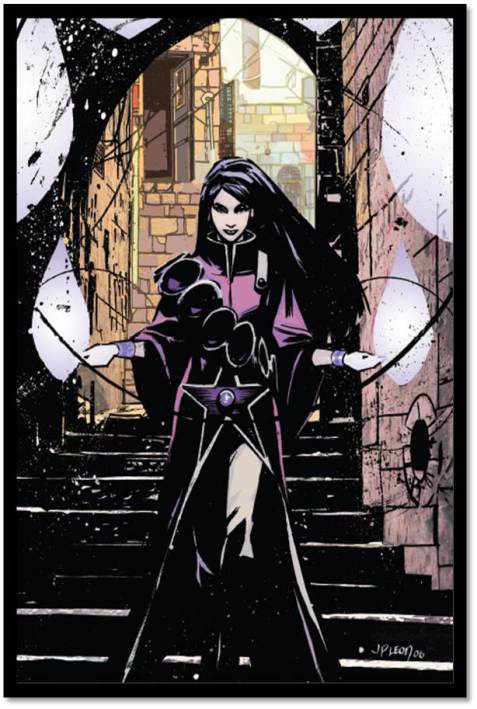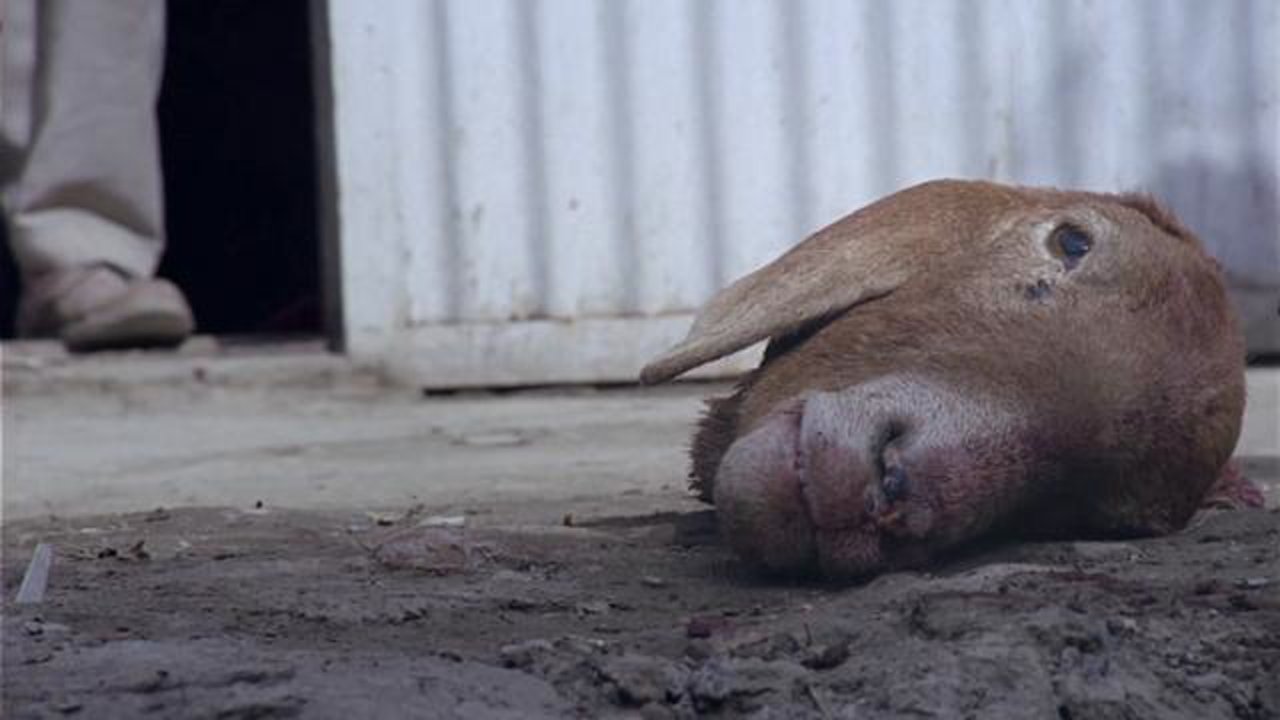AK Comics has potential to bring something new to the comic book industry, especially with its two female characters, Jalila and Aya. But the writers need to break away from imitating mainstream American comic books and give Jalila and Aya their own identities as Middle-Eastern/Muslim super-heroines.
AK Comics, founded by Dr. Ayman Kandeel, is an Egyptian-based comic company and considered to be the first large scale production of the super-hero genre in the Middle-East. As admirable the intentions of creating Arab/Muslim super-heroes and super-heroines may be, the images and roles of female characters in AK Comics are not much of an improvement from what is typically seen in mainstream American comic books.
“Jalila: Protector of The City of All Faiths” and “Aya: Princess of Darkness” are the two main super-heroine characters who lead their own comic book series, and while this may sound empowering, the visuals tell us otherwise. Unfortunately, both Jalila and Aya look like an unimaginative redux of unrealistically curvaceous and buxom western female characters like Wonder Woman and Catwoman.
Jalila’s story begins in a future where world peace was established in Jerusalem between Christians, Jews, and Muslims after a fictional “55 Years War.” However, the peace is disrupted by two terrorist organizations: The United Liberation Front (sounds like the PLO) and the Army of Zios (sounds like Zionism). Although there are positive intentions evident in Jalila’s first issue, very little is developed about her character. The reader learns that she gets her super-powers from a radiation suit that her parents designed in order for her to survive a nuclear blast at the end of the war, however hardly anything details the kind of relationship she had with her parents. What is her personal and/or social life like? Who are her friends? What are her character flaws? Where’s the inner conflict? None of these questions are answered (her religion is not mentioned explicitly, however it is implied that she is Muslim since her mother is seen wearing the hijaab in a photograph).
As Jalila soars over Jerusalem, she looks like the Arab version of Wonder Woman – thin waist, large breasts, and posing for the targeted heterosexual male audience. Like Wonder Woman, Jalila looks empowered with her cockiness and crime-fighting, but with her skin-tight costume and sexually suggestive depictions, one must ask: is she really empowered or is she being objectified because of the way heterosexual male writers, artists, and readers want to view her.
There are a lot of references to her gender whenever she fights thugs, who are all men of course, which make it clear that the writers and artists want to promote feminism and gender equality. Without a doubt, the topics are important for all readers, but these messages are contradicted by the way she is scantily depicted as a sex object. For instance, as she spies on a secret terrorist base, a sleazy and ugly old man puts a knife around her neck and says, “Hi beautiful… we’re going to have a fun time, baby!” Jalila throws an elbow into him and then slams her knee into his chest while exclaiming, “This is my idea of a fun time!” The pseudo-feminism is not only contrived, but also transparent given the way she is drawn. On this page, for example, her entire back is faced to the reader twice, including one full body shot of her slightly bent over in a sexually suggestive position.
Panel after panel, we see the “male gaze” in effect. Whether Jalila is arching her back, stretching out, bending over, doing split kicks, or simply having a conversation with a civilian, the artists never seem to miss an opportunity to show off Jalila’s impossibly curvy figure.
Aya, the Princess of Darkness, is not much different from Jalila, except that she is a dark-blonde Syrian who might as well be naked because all she wears is a skin-tight purple Catwoman-esque bodysuit and a red hood and cape. Creativity in her character is severely lacking when one considers how similar she is to Batman. For example, she doesn’t have any superpowers, she relies on martial arts, her father was murdered, and she vows to ensure no one else experiences the same tragedy. To Batman fans, this sounds somewhat recycled. The difference of course is that Aya’s mother is not only alive, but imprisoned because she is accused of murdering Aya’s father! In efforts to free her mother from prison, Aya becomes a law school student and, for no other reason except to serve the male gaze, she wears skin-tight jeans that look as if they will slip off any moment. While it’s nice to see Aya as an intelligent woman, the clothing degrades her into a sex object.
On the website for AK Comics, it is stated that Aya’s character flaw is that she’s “too serious,” however, this is quite contrary to what’s presented in the comic books. She is just as cocky and sarcastic as Jalila. In fact, Aya and Jalila might as well be the same character because their storylines are so underdeveloped. Not only do both of their comic books show them objectified in the same manner, but they also contain similar references to gender, which gets so overemphasized that they generate stereotypes about how Muslim women are supposedly treated in Muslim countries.
As mentioned above, there are perverted men who want to molest and rape Jalila, and there are other male characters that are incredibly abusive, particularly her two brothers. One of her brothers, as pointed out earlier, is part of a terrorist organization who simply shouts at Jalila and slams the door in her face, while her other brother is a drug addict. The latter gets so angry after Jalila flushes his drugs down the toilet that he slaps her across the face. Rather than screaming at him, Jalila watches her brother weep in shame and apologize to her. Jalila hugs him and says, “It’s ok” and that she “understands” how difficult it is for him.
The treatment of women is quite similar in Aya’s story. She is fighting for her mother’s freedom and trying to prove that she didn’t kill Aya’s father – this eerily seems to parallel how Muslim women are often accused of certain crimes that they did not commit in certain Muslim countries. It would be inappropriate to deny the injustices that some Muslim women face in certain Muslim countries, but when writers emphasize so much on women fighting against patriarchy in the Muslim world, it tends to reaffirm the stereotypes that many non-Muslims in the West have about Islam.
On one hand, Jalila and Aya serve as vehicles to teach younger people to not join terrorist organizations, don’t take drugs, and don’t abuse women, but on the other hand, there are countless pages of sexually suggestive images of them crawling, posing like supermodels, and even displaying tight see-through shirts where their nipples are visible in some panels. What messages do these images send and how do they improve the way women are perceived and treated in the Muslim world? It’s not just Jalila and Aya who are drawn stereotypically; every female character, no matter how minor the role, are drawn as buxom and skimpy dressed “babes.” It’s important to point out that American comic books were once a way to “girl watch” during the late 1940’s before the advent of “Playboy” and “Penthouse,” and it seems that AK Comics provides a way for young Arab boys to ogle at busty and curvy women. Since AK Comics has recently distributed their books in the United States, the western heterosexual male reader has more chances of perceiving Jalila and Aya as “hot Arab babes” than feminists simply due to their depictions and lack of character development.
Unlike Naif Al-Mutawa’s “The 99,” Jalila and Aya lack symbolism, originality, and most of all, they lack their own culture and individuality! Jalila and Aya merely have Arabic names, and to strip them of their culture and religious background arguably reveals a message to conform to Western standards of society, beauty/fashion, and government. AK Comics has potential to bring something new to the comic book industry, especially with its two female characters, but if the writers are really interested in showing truly empowered Muslim women, they need to break away from copying and imitating mainstream American comic books and give Jalila and Aya their own identities as Middle-Eastern/Muslim super-heroines.
If AK Comics can reinvent Jalia and Aya as more complex, realistic, and three-dimensional characters, it will be a revolutionary achievement for Muslim women in comic books alongside Naif Al-Mutawa’s “The 99.”
Jehanzeb Dar is a Pakistani Muslim-American undergrad student and independent filmmaker. He currently blogs at Muslim Reverie, where he critiques media, writes poetry, and reflects on spirituality. He is also a frequent guest contributor on Racialicious. An unedited version of this article previously appeared at Muslimah Media Watch.





